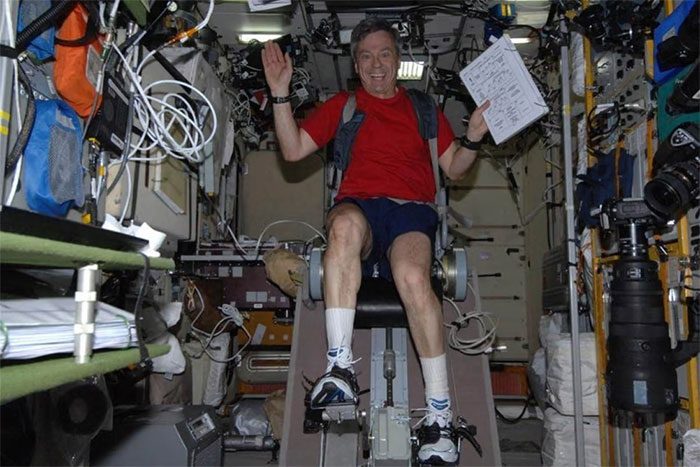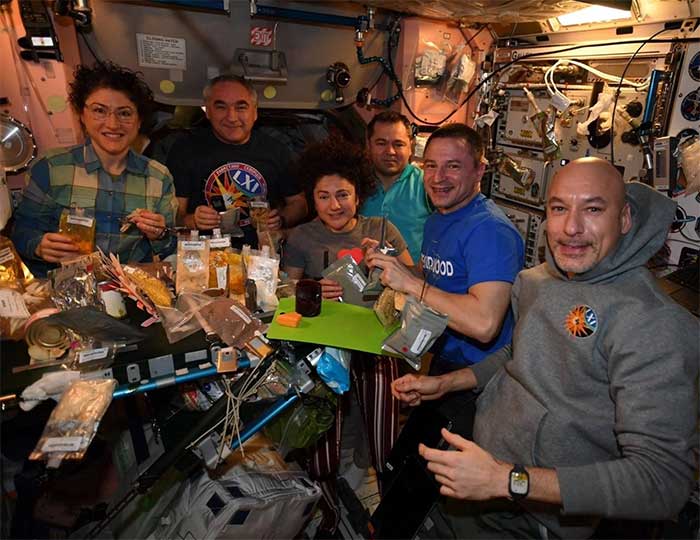The biggest health challenge for astronauts is shielding them from cosmic radiation, high-energy particles that can damage cells and cause cancer.
According to SCMP, it is already difficult to keep up with the healthcare challenges we face on Earth, let alone predict the challenges that may arise in space.
However, that is the job of the Space Health Institute, NASA’s research organization tasked with preparing humans to deal with illnesses and accidents they may encounter while traveling to the Moon, Mars, and other planets.

Priorities for astronauts include how to maintain the nutritional quality of food for up to 5 years, addressing physical and mental health issues, and preventing disease. (Photo: GQ).
With NASA’s Mars exploration program set for the next 30 years and the recent discovery of an Earth-like planet outside the solar system, NASA has begun to consider the challenging practical issues related to ethical dilemmas in long-duration space missions.
Shielding Astronauts
Three people working with the institute—Director Dorit Donoviel, astronaut Nicole Stott, and Professor Christopher Mason—spoke at a recent healthcare conference in Boston organized by STAT media. They described healthcare strategies to help humans travel safely in space.
Director Dorit Donoviel stated that exposure to cosmic radiation—high-energy particles emitted from sunlight and deep space—is the biggest challenge for human space travel. These particles can damage or kill DNA in our cells and cause cancer.
The Earth’s magnetic field protects us from radiation, but that magnetic field does not exist in space or on Mars. Director Dorit Donoviel explained that the major mission is to protect astronauts from radiation.

Canadian astronaut Robert Thirsk cycling on the International Space Station. Researchers say astronauts on long flights to Mars will need ways to exercise, maintain mental health, and avoid illness. (Photo: NASA).
Director Dorit Donoviel remarked: “The amount of shielding material we need to protect you is 5.2 meters, and that is not feasible. Thus, both humans and even computers on board will have to contend with radiation issues.”
Radiation is the biggest concern for the journey to Mars, Professor Christopher Mason added. “We can do some monitoring and provide shielding, but that can consume a lot of energy, and the shielding can be too large.”
Scientists are also pursuing mechanical solutions, such as using the spacecraft’s water supply to line the crew’s sleeping quarters and act as radiation shielding. NASA is testing radiation-protective suits for astronauts’ missions to the Moon.
Nutrition
Food and nutrition are another major concern, especially for trips to Mars. Astronauts on the International Space Station (ISS) receive food supplies from Earth every few months.
This method will not be available for those undertaking long flights to Mars, as astronauts will need to bring everything they require for the entire journey.
A trip from Earth to Mars takes about 9 months. NASA estimates that sending a crew there and back will take 3 years due to the movements of both planets, which requires a substantial amount of food.

The crew of the International Space Station sharing a special Thanksgiving meal in 2019. Trips to Mars will require nutritious food with a shelf life of 5 years. (Photo: NASA).
Astronaut Nicole Stott, who has completed four missions at the ISS, stated: “The items we send up will always need to be taken with us. We need to revolutionize the food system. It’s not just about the shape, form, or presentation of food, but also the nutritional aspects.”
Scientists are working to find ways to extend the shelf life of nutrients.
“You have to bring food to that planet beforehand because astronauts cannot carry all the food they need. This means the shelf life of food must be 5 years for a 3-year mission. Nutrients will degrade,” Director Dorit Donoviel noted, emphasizing the need for new technology.
Exercise
Exercise is a crucial factor for space health as bone and muscle loss will occur if the body is in a microgravity state.
Astronauts need to exercise for several hours each day to maintain muscle and bone health. The ISS has a treadmill and exercise bike for this purpose.
They must strap themselves to the treadmill to avoid floating away. The bike does not have a seat or handlebars since these are unnecessary in a microgravity environment.

Astronauts must strap themselves to their bodies to exercise. (Photo: National Air and Space Museum).
“If you’re floating in space, you don’t need bones and muscles, so your body doesn’t expend any energy to maintain them. However, since we still have to return to Earth and live like normal people, we must exercise 2 hours a day on the space station, engaging in resistance and aerobic workouts,” astronaut Nicole Stott explained.
Mental health is also a prominent issue. Living space in a spacecraft to Mars could be around 1,000 square feet. Crew members will have to share this space for 3 months without going outside.
NASA selects astronauts with different yet harmonious personalities. Nevertheless, stress can arise and pose risks to the mission. “There are many risks to human health in space. They cannot cope with everything,” Director Dorit Donoviel stated.


















































